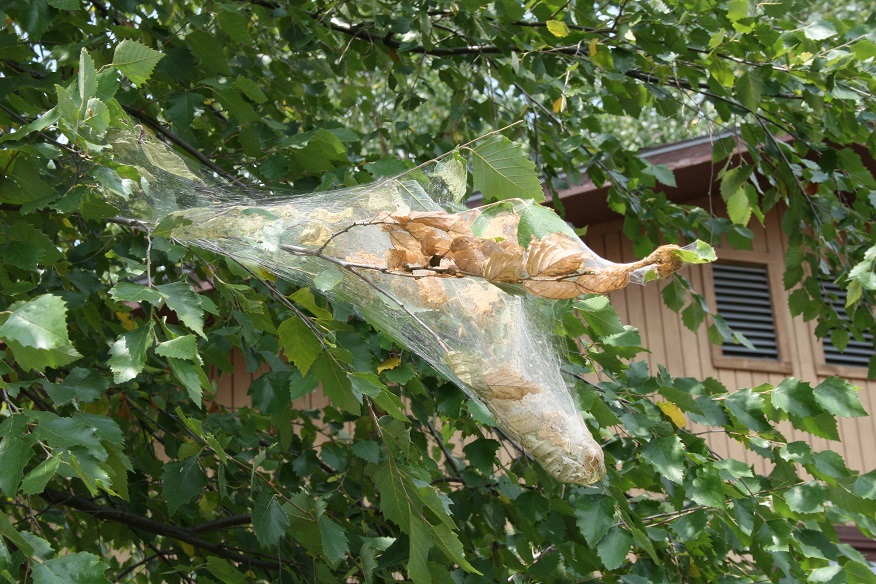— by Dr. Raymond Cloyd
The fall webworm (Hyphantria cunea) is prevalent throughout Kansas with webs noticeable on certain trees and shrubs, which is the start of the second generation. Fall webworm nests are typically quite evident in August and September, with silk webbing enclosing the ends of branches and associated foliage or leaves (Figures 1 and 2).
Fig 1: Fall webworm nest on birch tree by Raymond Cloyd.
Fall webworm larvae (=caterpillars) are pale-green to yellow to nearly whitish in color with black spots (two per each abdominal segment).
Fig 2: Fall webworm nest and accompanying feeding damage (Raymond Cloyd)
The caterpillars are covered with long, white hairs (Figure 3). They feed on a wide range of trees, including: birch, crabapple, maples, hickory, pecan, and walnut. Fall webworm caterpillars, unlike eastern tent caterpillars, remain within the enclosed webbing and do not venture out to feed. Caterpillars consume leaves, resulting in naked branches with dirty webbing attached that contains fecal deposits (“caterpillar poop”). Although feeding by fall webworm caterpillars may ruin the aesthetic appeal of infested trees; the subsequent damage is usually not directly harmful to tree health because trees are primarily allocating resources for storage instead of producing new vegetative growth. The most effective means of dealing with fall webworm infestations is to simply prune-out the webs that enclose the caterpillars. Insecticide sprays may not be effective because the caterpillars remain in the webbing while feeding; thus reducing exposure to spray residues. If insecticides are too be used then be sure to use high-volume spray applications that penetrate the protective webbing or use a rake to disrupt or open-up the webbing so that the insecticide spray contacts the caterpillars.
I need to acknowledge Jeff Otto of Wichita, KS for bringing to my attention that fall webworm was active.
Fig 3. Close-up of fall webworm caterpillar (Raymond Cloyd)


